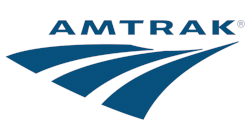The National Transportation Safety Board (NTSB) sent a go-team to investigate an Amtrak derailment in Philadelphia, Pennsylvania.
NTSB investigator Mike Flanigon led the team as investigator-in-charge. NTSB Board Member Robert Sumwalt accompanied the team and served as the principal spokesman during the on-scene phase of the investigation.
Public Affairs Officer Peter Knudson was also on-scene in Philadelphia to coordinate media-related activities.
As part of its ongoing investigation into the May 12, 2015, derailment of Amtrak Train 188 in Philadelphia, the NTSB provided the following update on 5/20/15:
NTSB investigators have completed most of their on-scene documentation work at the accident site and at the Amtrak facilities in Delaware. Additional 3D laser scanning of the train cars will be completed in the coming weeks.
An examination of the signals systems has revealed no anomalies or malfunctions.
The NTSB has possession of the Amtrak engineer’s cell phone. Additionally, under its enforcement authority, the Federal Railroad Administration subpoenaed and obtained the engineer’s cell phone records and has shared that data with NTSB forensic experts. Although the records appear to indicate that calls were made, text messages sent, and data used on the day of the accident, investigators have not yet made a determination if there was any phone activity during the time the train was being operated.
In order to make that assessment, investigators have started the process of correlating the time stamps in the engineer’s cell phone records with multiple data sources including the locomotive event recorder, the locomotive outward facing video, recorded radio communications, and surveillance video.
The processes involved in correlating time stamps for all these devices are detailed and lengthy. Because of variations in time stamps for each data source, each one must be correlated to the same time zone so that a factual timeline of events can be developed that will allow investigators to understand if any phone activity has any relevance to the accident.
Investigators interviewed the engineer of the SEPTA train that had stopped after being struck by an object that had shattered the windshield of the locomotive. The SEPTA engineer said that the Amtrak engineer announced on the radio, “hot track rail two,” to let him know that the Amtrak train was about to pass the stopped SEPTA train. He saw Amtrak 188 pass on track 2 and did not notice anything unusual.
Interviews with passengers and emergency responders will continue over the coming weeks. Investigative specialists in crashworthiness and survival factors are interviewing passengers that survived the accident in order to understand the circumstances of the evacuation as well as how injuries correlated with train car and seating positions.
Amtrak has provided the NTSB with the engineer’s training and employment records. He had been operating trains in the Washington-Boston Northeast Corridor for about three years. He had been specifically assigned the Washington-New York segment of the corridor for several weeks.
A dedicated webpage for this accident investigation has been created where all related materials to it can be accessed: http://go.usa.gov/38MUB.



